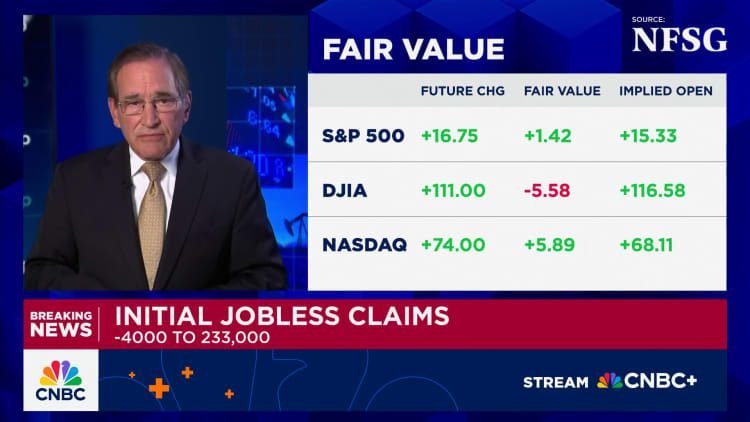Job Growth Surpasses Expectations: June Report Highlights
Resilience in the Labor Market
In June, the labor market displayed unexpected strength, largely driven by an increase in government hiring. The latest report indicates that nonfarm payrolls rose by 147,000, surpassing the anticipated increase of 110,000. This figure, reported by the Bureau of Labor Statistics, is also slightly higher than the revised tally of 144,000 from May. Additionally, April’s numbers received an upward adjustment to 158,000.
Decline in Unemployment Rate
The unemployment rate decreased to 4.1%, marking the lowest level since February. This figure stands in contrast to forecasts that predicted a minor rise to 4.3%. A broader measure that includes discouraged workers and those employed part-time for economic reasons also saw a slight decline, reaching 7.7%, the lowest since January. However, this drop in unemployment was primarily due to a reduction in individuals either working or seeking employment.
Participation Rate Snapshot
The labor force participation rate fell to 62.3%, hitting its lowest point since late 2022. This decline can be attributed to an increase of 329,000 individuals who are now excluded from the labor force. Furthermore, a household survey indicated a more modest employment gain of just 93,000. The number of people who did not search for a job in the past four weeks surged by 234,000, reaching a total of 1.8 million.
Market Reactions
Following the release of the report, stock markets responded positively, with an uptick in share prices. Treasury yields also jumped significantly during a trading session that concluded ahead of the Independence Day holiday in the U.S. The overall gain for July aligns closely with the year-to-date average of 146,000 job increases.
Average Hourly Earnings Growth
Alongside the robust job creation and declining unemployment rates, average hourly earnings increased by 0.2% for the month and 3.7% from the previous year. This points to a lack of significant upward pressure on wage-related inflation. Meanwhile, the average workweek slightly decreased to 34.2 hours.
Government Employment Gains
Government sectors notably led job growth, adding 73,000 positions, primarily due to substantial hiring in state and local government sectors, especially in education, which accounted for 40,000 new positions. The federal sector experienced a reduction of 7,000 jobs, largely influenced by cuts from the Department of Government Efficiency under Elon Musk.
Sector Performance Overview
In health care, job growth remained strong, with approximately 39,000 new positions added, while social assistance contributed around 19,000 jobs. Construction saw a slight growth with 15,000 new jobs, whereas manufacturing reported a loss of 7,000 positions. Most other sectors exhibited little change overall.
Insights on Job Market Dynamics
The consistency of the U.S. job market stands out, even in the face of increasing economic challenges. However, some observers note that this resilience may be supported by fewer sectors. Despite headline job gains and the unexpected downturn in unemployment appearing optimistic, for job seekers outside of healthcare, social assistance, and public education sectors, the job outlook may not seem as favorable.
Focus on Monetary Policy
The payroll report intensifies attention on the Federal Reserve’s approach to monetary policy, especially as signs emerge of a slowing labor market. Meanwhile, recent tariffs introduced by President Trump have had a muted effect on inflation.
In related updates, the Labor Department reported that initial unemployment claims decreased to 233,000 for the week ending June 28, a drop of 4,000 and below the predicted 240,000.
Federal Reserve’s Rate Strategy
President Trump has called for the Federal Reserve to cut its benchmark interest rates, which have remained steady between 4.25% and 4.5% since December. He recently intensified his critique of Fed Chair Jerome Powell, suggesting his resignation.
Powell has maintained a cautious stance regarding policy adjustments, noting that while all options are on the table for rate cuts, the current strength of the economy allows for careful consideration of forthcoming data.
Market expectations shifted dramatically following the employment report, with the likelihood of a rate cut in July fading to 4.7%, a notable drop from 23.8% just a day prior, according to the CME Group’s FedWatch. The market now anticipates that the next rate reduction will not occur until September, and expectations for a total of three cuts this year have been revised down to two.
Employment Type Trends
Interestingly, the rise in employment leaned heavily towards full-time positions, which increased by 437,000, while part-time roles decreased by 367,000. This trend suggests a promising shift in the quality of job growth across various sectors of the economy.
